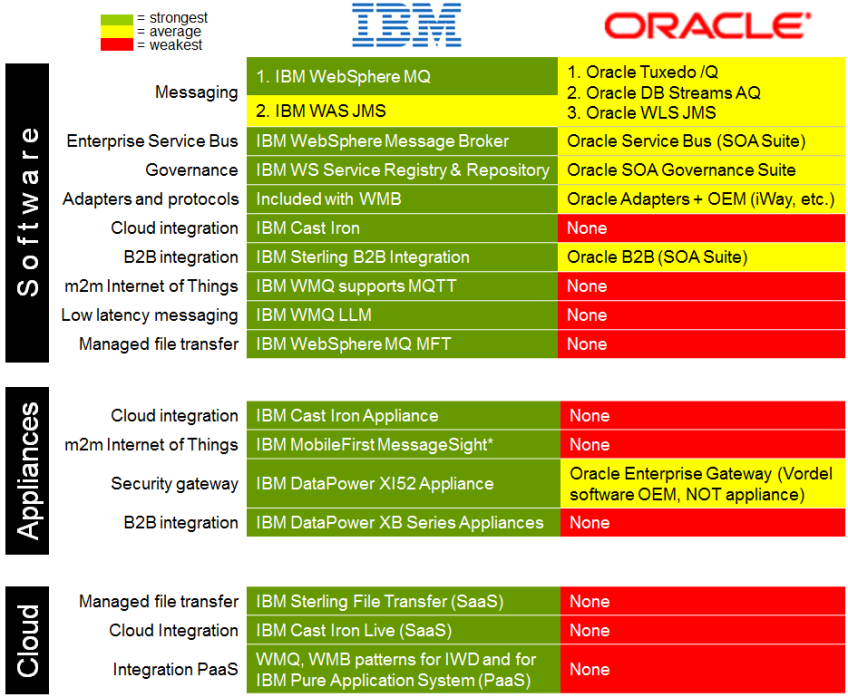The ability of enterprises to create new applications is limited by the ways
those applications can reuse existing business logic and data. This explains
huge interest in messaging and connectivity products. Some call them ESBs,
others call them SOA products, but no matter what you call it, this kind of
specialized middleware must provide a set of capabilities that make it easier to
connect to many different types of old and new applications, data formats,
protocols and be able to perform transformation of the above mentioned things.
Synchronous, asynchronous, transactional, reliable and high performance
capabilities are a big plus (as they say in job postings).
Where there is demand, there is usually supply. In case of IBM and Oracle,
both vendors provide a set of offerings that claim to solve the problem of
connectivity. Both vendors claim that they have the “most complete integration
solution on the planet”. I decided to take a look and compare. In this first
article of the series I will simply look at the products at a high level and in
subsequent articles will look into specifics and more in-depth technical and
financial TCO comparisons between products. Here is how offerings from these two
vendors stack up to each other. Please note that color coding on this comparison
is meant to reflect the strength of the product based on (a) Technical
capabilities (performance, feature richness, security, scalability, etc.) and
(b) Market position (number of users, market share, history, release schedules,
analysts’ feedback, etc.).
By: Roman Kharkovski
Source: http://smarterquestions.org/2013/03/how-does-ibm-connectivity-and-integration-portfolio-compare-to-oracle/

Aucun commentaire:
Enregistrer un commentaire